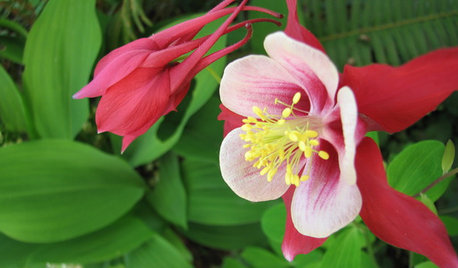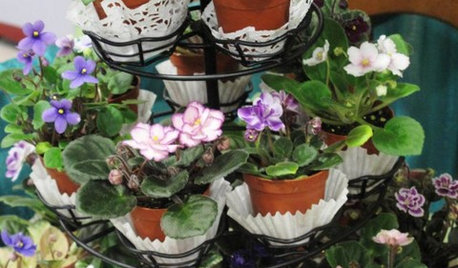Hybridizer, breeder, request
sandandsun
11 years ago
Related Stories

EDIBLE GARDENSGrow Plum Hybrids for Your Favorite Fruit Flavors
Plums are cozying up with apricots, peaches and even cherries — here’s how to grow these hybrids for the best aspects of each
Full Story
KITCHEN DESIGNFind Your Dining Style: 9 Strategies for Eat-In Kitchens
What kind of seating do you request at a restaurant? It may hold the key to setting up your kitchen table
Full Story
GARDENING FOR BUTTERFLIESGreat Design Plant: Columbine Grows Happily in Shade and Sun
Its ethereal beauty comes from complex forms and wide-ranging colors, but columbine’s benefits are highly attractive too
Full Story
HOUSEPLANTSRetro Houseplants Get a New Look
The wild and crazy houseplants of the 1970s make a splash in today's interiors
Full Story
GARDENING GUIDESWhat Kind of Roses Should You Grow?
Want to add the beauty of roses to your garden? Find out which ones, from old-fashioned to modern, are right for you
Full Story
COLORBest Ways to Use Exclusive Plum, Sherwin-Williams’ Color of 2014
Pretty, moody, maybe even a neutral, this toned-down grayish purple can work in any room. Here's how
Full Story
THE ART OF ARCHITECTUREDesign Workshop: The ‘Disappearing’ Guardrail
Putting the focus on the view instead of the rail on a porch or balcony is sometimes clearly the best option
Full Story
GARDENING AND LANDSCAPING13 New Ways to Make a Splash With a Hot Tub
Check out the modern options and custom features that are making outdoor spa tubs hot again
Full Story
PETSHow to Help Your Dog Be a Good Neighbor
Good fences certainly help, but be sure to introduce your pup to the neighbors and check in from time to time
Full Story
GARDENING GUIDES6 Captivating Roses for an Alluringly Fragrant Garden
Perfume your garden with aromas from richly spicy to lightly sweet, without sacrificing an inch of color
Full StoryMore Discussions










AquaEyes 7a NJ
AquaEyes 7a NJ
Related Professionals
Deer Park Landscape Architects & Landscape Designers · Wheeling Landscape Architects & Landscape Designers · Aurora Landscape Contractors · Buford Landscape Contractors · Middletown Landscape Contractors · Maple Valley Landscape Contractors · Cockeysville Landscape Contractors · Gallatin Landscape Contractors · Metairie Landscape Contractors · Overland Park Landscape Contractors · Plantation Landscape Contractors · Berkeley Siding & Exteriors · Lebanon Siding & Exteriors · San Diego Siding & Exteriors · North Highlands Siding & ExteriorssandandsunOriginal Author
AquaEyes 7a NJ
Kippy
AquaEyes 7a NJ
luxrosa
AquaEyes 7a NJ
cath41
henry_kuska
AquaEyes 7a NJ
sandandsunOriginal Author